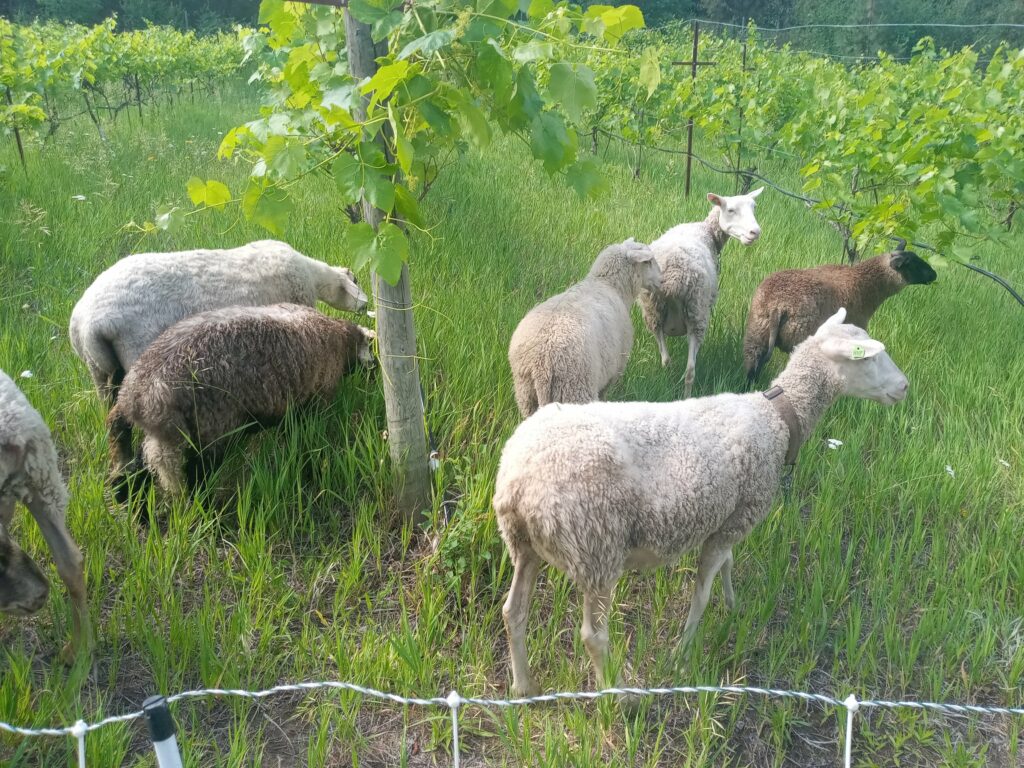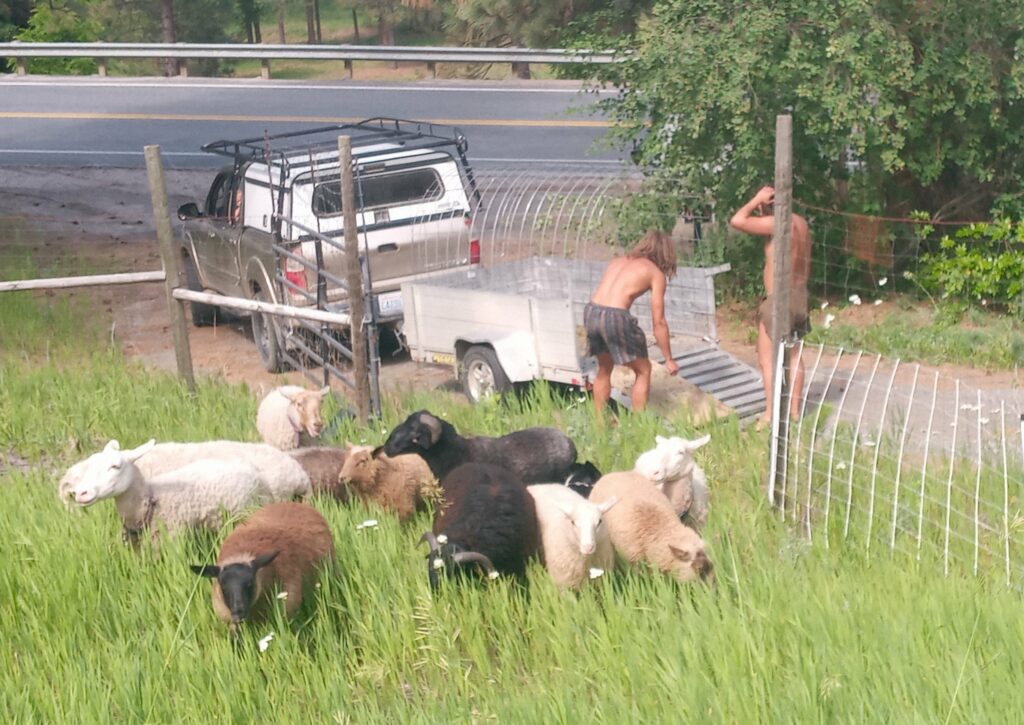Learning the hard way by making mistakes is a tried and true (though often painful) path to knowledge. Looking back on what I have learned, it seems more like a lifestyle. It starts by taking chances. You seldom do that unless you think there is something to gain. I get a lot of ideas from reading and talking to people but util I actually do something; I usually don’t know much. There are mistakes to be made having sheep in a vineyard. They could break the irrigation, eat the grape vines, or break into the garden. But I was excited to see it happen.

Last year I listened to a Regenerative Agriculture Podcast interviewing Kelly Mulville. He is a lead man in the United States promoting the sheep-in-the-vineyard idea. There are others in Australia and around the world. The possibilities are enticing: very few inputs including no tillage, no mowing, no removing suckers, and no weeding; higher quality and quantity of grapes and soil health; sequestering carbon and retaining water; more diversity of plants, insects, birds, and soil biology… Also, more profit.
On the down side: you need sheep; they eat grape plants; they need to be fenced; most vineyards are not set up for sheep; they are smelly and noisy; cougars eat them. This last point was particularly tough because I had the fencing in hand and some sheep lined up with a friend until a cougar ate one of her sheep, and a couple others were injured. Thus, my first sheep arrangement fell through. I contacted some nomadic herders as a backup plan. (See Home on the Range, NC Monthly March 2022) They had lost animals to cougars too and were reluctant to leave sheep here overnight. But they were willing to leave some for a day. Game on!
Mulville is clear about having a vineyard that is set up for sheep. His vineyard at Paicines Ranch in California has its grapes trellised over 5 feet off the ground so sheep can’t reach them. My grapes are much closer to the ground, but many parts were trellised higher following another mistake I learned from. A couple years ago I let a grape that crept into a nearby tree go. It did attract birds and produced fruit that I could not protect, which is why you don’t usually do that. It sent a cane up to the top of the tree. The next year another cane went clear down the other side. That second cane was loaded with grapes. The robins got them. But I wondered if I tied long canes higher in the trellis, would they produce more. So, I tied a lot of grapes higher this year. They are producing more, and the sheep couldn’t get to them.

As for fencing, the nomads had very portable electric fence. They set up 220 feet in about 5 minutes. It could be moved just as quickly, and the sheep could be directed more exactly. An idea for next time.
I knew little to nothing about sheep. Chances for mistakes were high. So, I hung out with the sheep most of the day. I thought I would chase them off if they were destroying vines. It turns out that these sheep like people. They followed me. Well okay, they started to eat my clothing but a couple of bops on their heads dissuaded them from that. Also, they chew their cud like cows. When I sat in a chair and read a book, they lay down nearby and chewed away.
They have personalities. A few were noisy, “Baaa, Baaa” etc. One ewe always had followers, especially her kids. But generally, if one got excited about something it was eating, others would run over to check it out. They do eat grape leaves but not young grapes. They did eat down the suckers lower on the trunks as I hoped they would. Things they liked included sweet clover, grape leaves, grass, plantain tops and Brown-eyed Susans. Things they didn’t like included Oregon Grape, and Yarrow. They would typically bite off the top of the grass or plant they were dining on. This left most of the grass about as tall as it was before they came.
I usually mow the vineyard about now and put the clippings in the compost thinking that I will put the compost back in the aisles between the grape plants. That’s at least 3 steps: mow, compost and spread. Truthfully, I often fail to get to the spread part. The compost has a lot of biology in it that is good for the soil. But it is nothing compared to the sheep poop and pee that comes straight out of these mobile biodigesters. As for smell, it didn’t amount to much in just one day except that when our cat came onto my bed that night, he smelled like sheep.
Was this all a mistake? The real proof will be a noticeable increase in fertility by the end of the season and if the production quantity and quality go up or down. Video of Mulville standing in his vineyard shows the ground with very little vegetation left. I’m sure that the grass has already been biodigested and returned to the soil. Still, I have a nagging feeling that you want to have at least four inches of grass left growing. A principle of regenerative agriculture is that green plants, even those considered weeds, are sharing the sugars they produce with fungi in the soil. Those fungi in turn are feeding and diversifying the whole underground biome. Did Mulville make a mistake? Time will tell.
Luckily or unluckily as it may be, this is a new idea that has not been completely worked out. The nomads said that the Italians have a preferred breed of sheep to graze in their vineyards. So, there is a lot more to read and learn from others about it, which of course opens possibilities for making a lot more mistakes…

Very interesting. I will want to know how it all turns out. Was it a one time deal or do they come back several more times? Here on our island, a friend owns a kiwi farm and the sheep have always been integral.
PermalinkIt was once this year but I am gearing up to make it an annual practice.
PermalinkFacinating!
Permalink